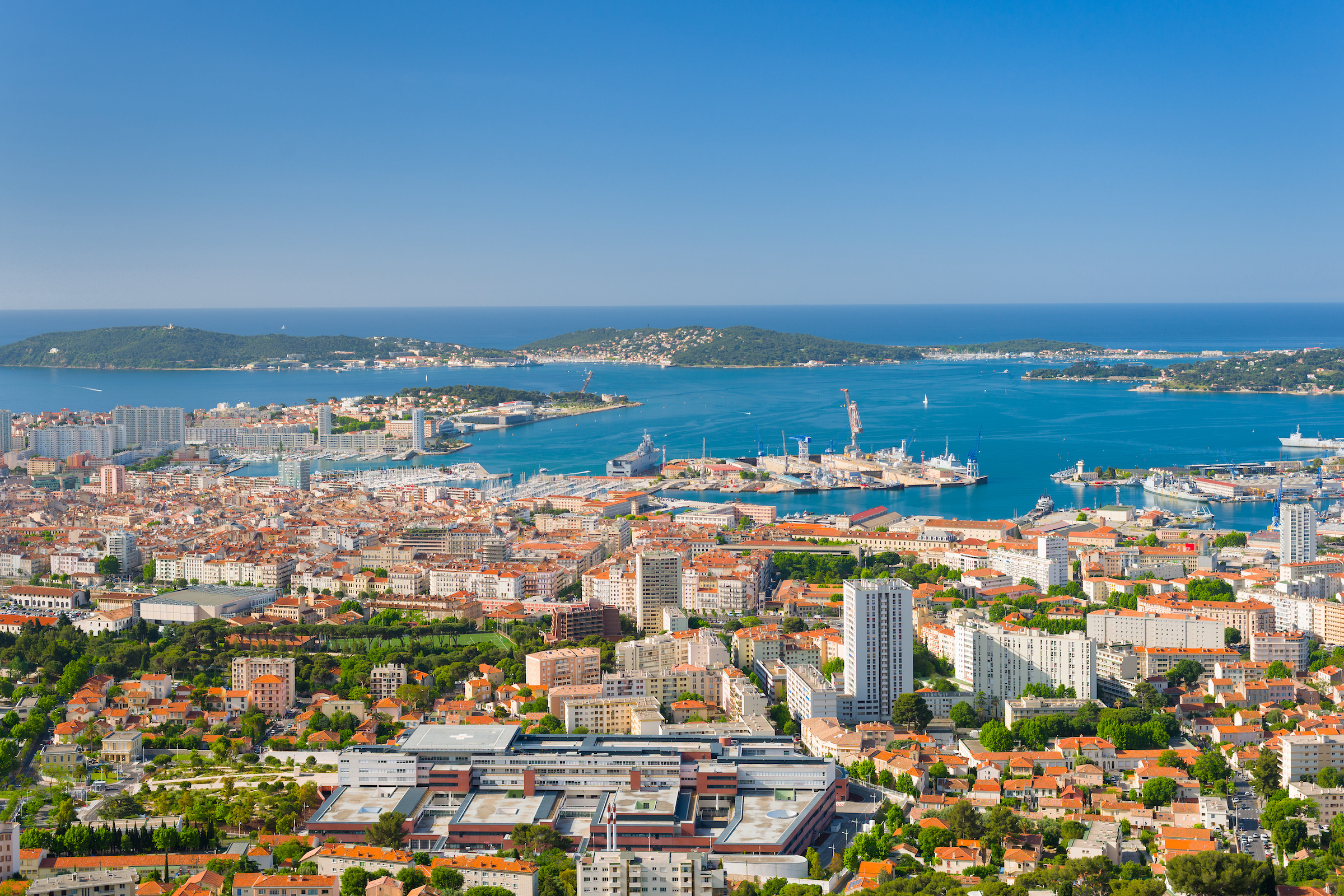Toulon

Toulon is the home port of the aircraft carrier Charles de Gaulle, the largest ship in the French Navy. This indicates that, along with Brest, the city is the most important naval base in France. This role characterizes the city, and has done so for centuries.
It began after Provence was annexed to France in 1486. Gradually, the port and the fortifications were expanded. The latter are lined up around the bay, which forms a natural harbor, and some of them can be visited. Another way to approach this subject is to take a harbor tour, where you can also catch a glimpse of France's modern warships.
In Toulon, naval history is urban history. Toulon was the starting point for French naval activities in the Mediterranean in the 18th and 19th centuries. When the city was occupied by German troops during World War II, the French sank their fleet anchored there themselves to prevent it from falling into enemy hands. In August 1944, Allied troops landed in Toulon, which was one of the first liberated cities in France.
Local mountain with a view
This event is commemorated today by the monument to the Allied landings on Mont Faron. This is the local mountain of the city, 584 meters high, accessed by a cable car. There is also a church, set up in a former bunker, and a small zoo. Mont Faron is a good first stop for any visitor to get an overview of the city. Another important viewpoint is the Tour Royale, part of the old fortifications, with its good view of the war port.
Among the sights with military references is also the Naval Museum models, paintings, maps and many other exhibits from the world of naval forces. However, it would be wrong to think that Toulon is all about the military. The art museum and the natural history museum deal with completely different themes.
Hidden charms of the old town
But Toulon is also a city for strolling and wandering. More modern houses stand along the harbor promenade after this neighborhood was destroyed in the war. Stores, cafes and the view of the harbor make this street attractive. It is only a stone's throw from there to the picturesque old town with its narrow streets, many fountains and small squares. If it is still market day, then there can be no doubt that you are in a Provencal town.
The Place de la Liberté with the fountain Fontaine de la Libération, the Place Victor Hugo with the opera of 1862 and the Place Puget with the fountain Fontaine des trois Dauphins are to be emphasized. You should also visit the Sainte Marie Cathedral, which dates back to the 11th century and combines different architectural styles.
Culture and relaxation
Toulon, however, is not only the history of the city and its architectural traces. Several music festivals also make the city a focal point for culture lovers, ranging from classical music to rock and folk to film music. And hotspots of relaxation are the beaches. The Plages du Mourillon, well-equipped with pubs, green spaces and sports and playgrounds, can be reached on foot from the old town in 20 minutes.